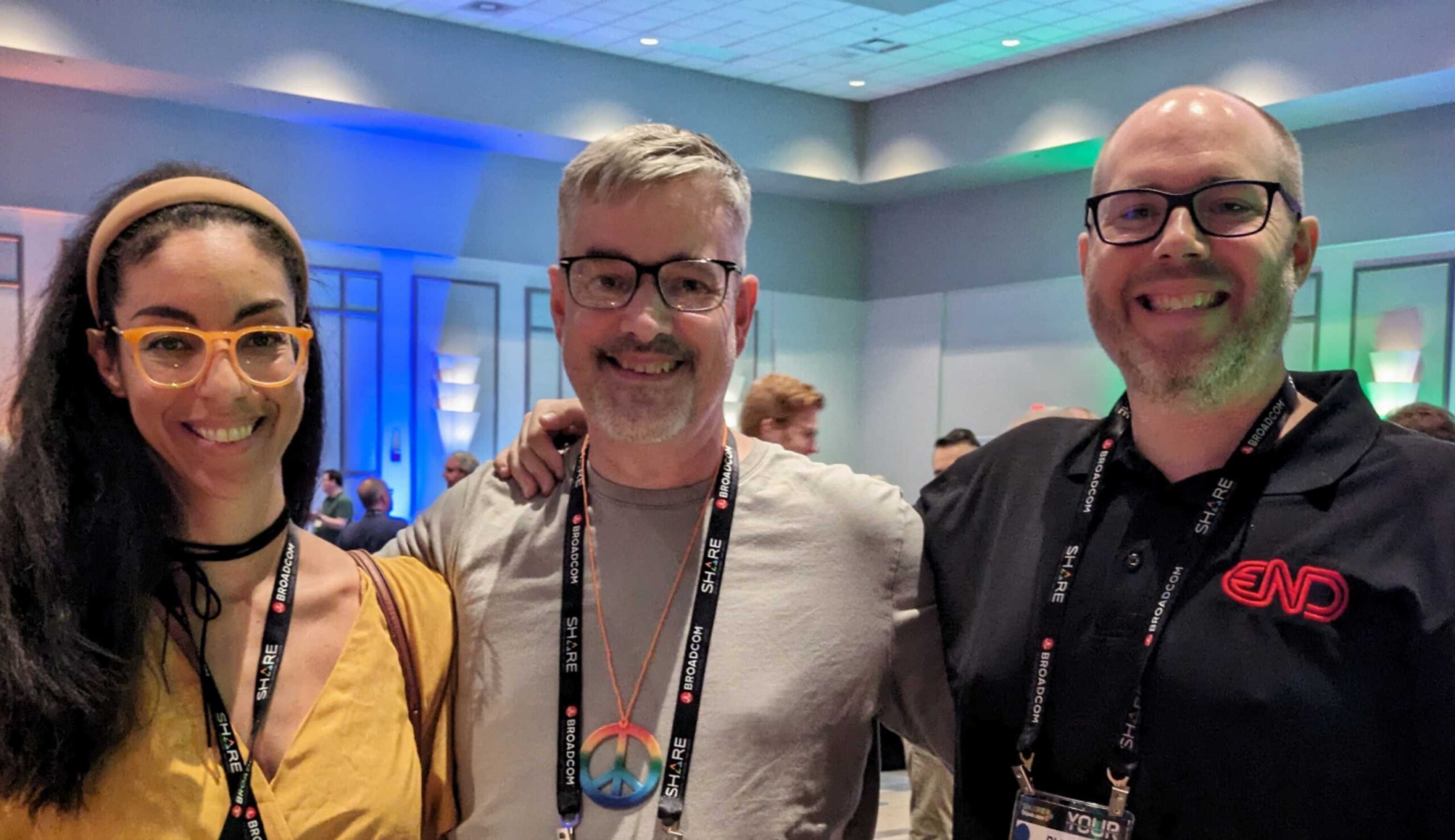
Mainframe Mania: Highlights from SHARE Orlando 2024

Mainframe is happening now!
While most people may imagine mainframe computers to be an antiquated world of massive machinery, tape spools, and limited possibilities, they actually receive widespread use today in 2024 as the backbone infrastructure that allows billions of financial transactions to occur daily on a global scale.
Government entities can store and retrieve sensitive data with extremely high reliability and almost nonexistent downtime, and other sectors like healthcare, insurance, and utilities can meet the speed of demand by processing multiple terabytes of data with incredible ease, and consistency.
Mainframe computers have a wonderfully rich history that spans decades, and as such there have been many groups over the years that bring practitioners, vendors, and resource owners together for collaboration. SHARE, with an inauguration year of 1955, is the oldest and most well-known of these organizations — if you work in mainframe, you know about SHARE! It began as the first IT Enterprise group ever to form within the United States and has been operating continuously since, through industry publications, annual conferences, trainings, and ongoing opportunities to connect.
I had the pleasure of attending this year’s SHARE Orlando 2024 where I learned about the state of mainframe security today and the in-demand skills needed to protect these critical systems. Here’s what I thought of my time at the event.
Mainframe Penetration Testing is a Scarce Skillset
SHARE Orlando 2024 was the first time I had the opportunity to experience a mainframe event, and it was an excellent introduction to the mainframe community at large with representation from organizations worldwide occupying the mainframe space. NetSPI was the only US-based proactive security consulting firm present, and I found myself engaged in multiple conversations on mainframe security as it relates to new integrations with data lakes, analytics platform, blockchain, and AI.
Also under frequent discussion were developments in hosted cloud computing, quantum cryptography, web applications on mainframe, and mainframe ethical hacking in general. I realized during my time at SHARE that there are currently very few dedicated ethical hackers working in mainframe; the arena is in great need of this skillset, and I was deeply encouraged to continue building my individual mainframe knowledge while contributing to the development of our expanding Mainframe Penetration Testing service line here at NetSPI.
IBM z/OS is the Most Popular
IBM z/OS is by far the most common operating system you will find in use on mainframe today, and I was intrigued by a product IBM recently released called WatsonX AI. It makes use of foundational models and generative AI to assist with code translation from COBOL to Java for increased interoperability, and also makes it possible for businesses to train and deploy custom AI capabilities across the enterprise environment while maintaining full control of the data they own.
I also learned so much at both talks given by Philip Young, NetSPI’s Mainframe Director. At his first talk, entitled “Hacking CICS Applications: New Attacks on Old Screens”, the collaborative nature of SHARE was seen in full force as he was met with a great deal of feedback from the audience throughout the duration of the presentation. The talk covered an introduction to hack3270, a tool used to assist in CICS application pentesting, and certainly made an impression on the crowd… especially vendors and developers who had some new things to consider regarding the security of their CICS environments.
Philip’s second talk, “No Longer a Myth: A Guide to Mainframe Buffer Overflows”, was also well-received by the audience. A specific attack that for years many believed to be impossible was brought to light with a clear demo on how exactly this vulnerability can take place and some tips on ways to safeguard against buffer overflows on mainframe.
Finally, a talk given by Mark Wilson on the threat of ransomware within the mainframe environment. It was eye-opening for me as I personally was not aware of the native capability mainframe has for encrypting massive amounts of stored data within mere seconds. The fact that terabytes of mission-critical data could be encrypted in less than 12 minutes was a strong call to action for mainframe practitioners and owners alike to be aggressive with MFA requirements and tracking user behavior analytics.
Mainframe Security Is Mission-Critical
I have a soft spot for mission-critical operations, legacy systems, and critical infrastructure. More specifically, I have a deep and abiding passion for the security of systems like mainframe that are heavily relied upon that do not frequently gain mainstream attention in the cybersecurity space. If we are relying on these computers, we must continuously work to protect them! Though they have been around for many years, new integrations and developments mean we will be faced with new potential vulnerabilities. All an attacker needs is one weakness to prevail, and these are the situations I am here to identify and report for eradication.
Check Out These Free Resources to Expand Your Mainframe Security Education
There are some great talks available online, Philip has a fantastic list up (here and here are a few) covering many topics from the hacker perspective. IBM also hosts a free training program called IBM Z Xplore with hands-on interactive modules for learning to navigate and maximize z/OS use, as well as a networking platform called New to Z for burgeoning talent within any organization utilizing mainframe technology.
Overall, the experience at SHARE is a must-attend for those involved with or even just deeply fascinated by the world of mainframe. There is no other gathering of people with such passion and drive dedicated to this field. I was very pleased with the new information I was able to acquire and am so thankful for the connections I made among professionals and peers within the mainframe community.
See NetSPI’s technical research on Mainframe Penetration Testing by reading Philip’s article on Enumerating Users on z/OS with LISTUSER.
Explore More Blog Posts

How Often Should Organizations Conduct Penetration Tests?
Learn how often organizations should conduct penetration tests. Discover industry best practices, key factors influencing testing frequency, and why regular pentesting is essential for business security.

Mainframe State of the Platform: 2025 Security Assessment
Learn key insights into mainframe security in 2025, including trends, gaps, and strategies to enhance protection for critical enterprise systems.

The Penetration Testing Life Cycle Explained
Learn about the 5 phases of penetration testing and how this structured process uncovers vulnerabilities and strengthens your cybersecurity defenses.